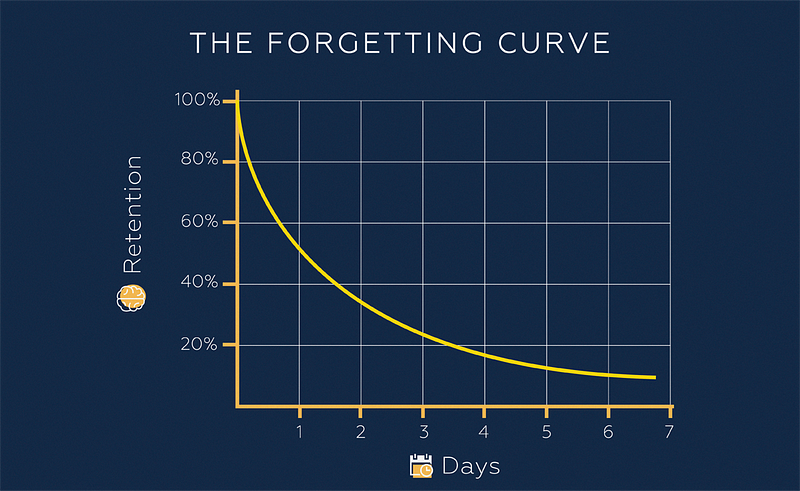In the previous blogpost we started discussing the trendiest e-learning tools with an overview of AR/VR applications. Among others, we mentioned that such applications may be integrated with microlearning techniques to increase the impact on the student.
In this post, we will talk more about microlearning: what it is and why it is gaining popularity among educators.
Microlearning — as learning in short, digestible, bite-sized units — is a relatively new learning strategy known for quickly closing skill and knowledge gaps. It represents short, focused learning nuggets (3–5 mins long or shorter) designed to meet a specific learning outcome. Focused, short and easily accessible from devices such as mobile phones, tablets, and laptop computers in formats as varied as videos, blogs, games, quizzes, simulations, podcasts, or slideshows, microlearning is believed to yield results, where traditional approaches fail.
The idea lying behind the microlearning approach is that modern learners are unable to memorize and digest the information given to them at traditional long learning sessions due to a number of reasons:

All these aspects contribute to the cognitive overload we constantly live in: too much information or too many tasks result in people being unable to process information.
According to Cognitive Load Theory introduced by John Sweller, instructional designers need to break down content into more manageable chunks, allowing the brain to convert short-term memory into long-term memory and application. In this context, the brevity and the granularity of content becomes the major advantage of the microlearning strategy that can create sticky learning experiences and flip the “Forgetting Curve” to a “Retention Curve”.

The benefits of microlearning-based training arise from its features:
1. Learner-centric: microlearning nuggets offer learners a higher control in defining a personalized and flexible learning path to match individual learning styles;
2. Just-in-time: learners can access nuggets at the moment of their learning need;
3. Immediate results: microlearning helps quickly close a small knowledge or skill gap;
4. Diverse formats: it is easily accessible via devices such as mobile phones, tablets, and laptop computers in formats as varied as videos, blogs, games, quizzes, simulations, podcasts, or slideshows;
5. Budget friendly: production costs for microlearning is significantly lower than the costs for a major course production;
6. Fast-paced culture-oriented: microlearning is a solution that employees will appreciate because it is not as disruptive as a day of training or even an hour or two of eLearning, besides, it appeals to millenials living at a faster pace than previous generations.
Despite a wide range of possible applications, the microlearning strategy still has disadvantages that need to be considered:
1. Fragmentation of knowledge: in the long run, microlearning content could end up as a bunch of separate fragments that are not tied together.
2. Lack of cognitive synthesis: so far, there is no proof that learners will be able to synthesize content from microlearning to construct appropriate mental models.
3. Potential for confusion: with the wide variety of devices and formats available, some learners could have problems switching between them.
Certain primitive forms of microlearning such as flashcards and quiz books have been known for over a century. Combine them with modern e-learning tools, add multimedia elements, employ gamification strategies, or take advantage of techniques such as spaced repetition — and they become more powerful, effective and engaging for learners.
In the modern culture such brief and multimodal learning activities become more common in a wide variety of spheres, such as:
· Learning business processes and procedures
· Interacting with case studies and specific scenarios
· Ensuring soft skills/ behavioral change
The microlearning strategy is a time- and cost-effective way to get employees familiar with the new developments without having to disrupt their working process with long training sessions.
To ensure that microlearning strategies are effective, it is crucial to determine where and when their use would be appropriate by considering the following:
_What kind of content shall be included?
_Actionable content that can be broken into small chunks is well-suited for microlearning strategies. However, abstract or more complex content which may be more difficult for learners to grasp may need a blended solution which can develop foundational knowledge.
_What technology shall be used?
_The effectiveness of microlearning depends on its accessibility: if a learner can’t quickly find what they’re looking for, it’s less likely that they’ll put the effort in to use training pieces. Therefore, the learning management system should be easily searchable and provide excellent tagging so that learners can find what they need.
_Who are the learners?
_Though microlearning can be highly effective across all generations, younger learners or learners who are more technologically savvy may feel more comfortable with microlearning assets than those who use digital devices less frequently. Besides, web-based microlearning depends on learners having web-enabled devices readily available while they work.
Without sounding too pompous, we can say that microlearning in its modern sense is more than an effective way to deliver training content. It’s an era-defining innovation that empowers educators to make students more knowledgeable every day, at their own pace and in the preferred format.